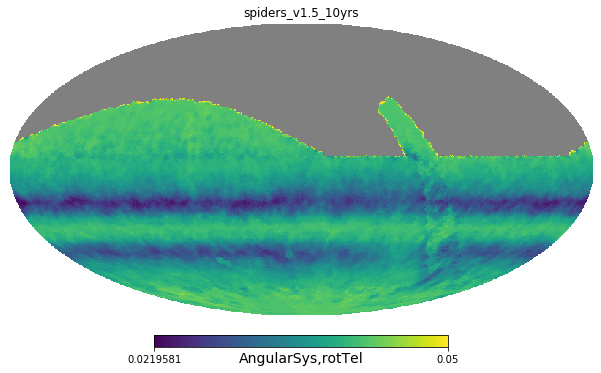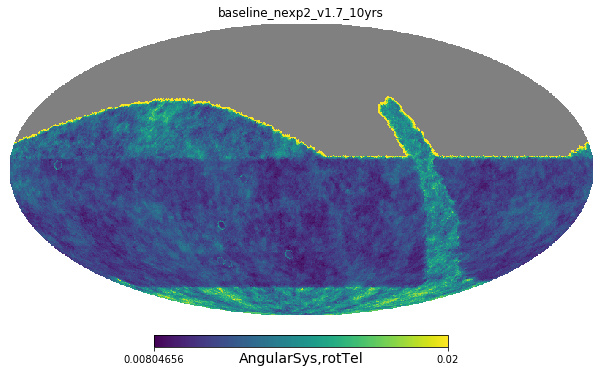I’d like to introduce some new metrics I’ve been working on that should be useful for checking how survey strategy impacts weak lensing science.
In the PSTN-051 report, we have a weak lensing metric that is of limited use because it is only sensitive to observations in i-band. As a step towards something better, I’ve put together a metric that estimates how well an extragalactic object’s size can be measured given an observation history.
The default parameters assume an object with:
• FWHM = 3 arcseconds
• an unextincted central surface brightness of 19 mag/sq arcsec in g, r, and i
• That there is a nearby star with ~5000 counts in it’s peak to measure the image PSF FWHM from
• A platescale of 0.2 arcsec/pixel
The output looks like this, where we can see the final SNR we would expect on a galaxy shape.

This metric can then provide weights to a second metric that checks how well our rotational dithering scheme would do at eliminating a systematic error. The main result is that our baseline random rotational dithering seems to do quite well, but if try to keep diffraction spikes aligned along CCD rows and columns systematics associated with rotTelPos are not well canceled.


It would be great to get some weak lensing experts to check that this seems like a reasonable metric, and we can change the default kwargs to better reflect an actual target of interest.
Notebook illustrating the metrics here: 21_Scratch/measure_shape_metric.ipynb at main · yoachim/21_Scratch · GitHub
Source code of the metric here: 21_Scratch/shape_metric.py at main · yoachim/21_Scratch · GitHub
My hope is that this could be a handy metric to quickly see how a strategy impacts weak lensing science. For example, we could look at the total area where the shape has a SNR >= 100. Then we can look at the tradeoff between area and depth as well as the impact of changing the filter distribution. This metric should also make it possible to quantify how much we can improve shape measurements by preferentially scheduling certain filters in good seeing time.